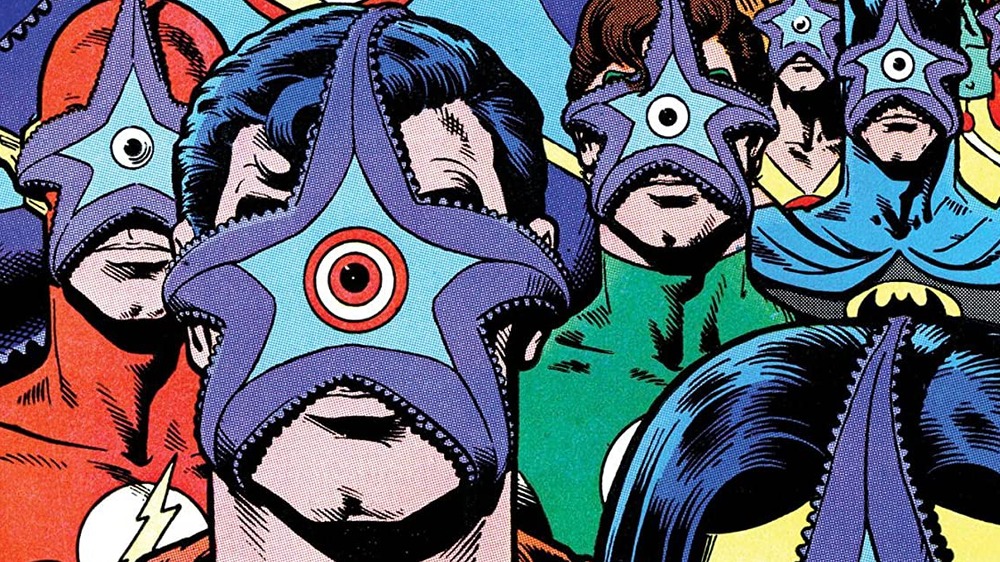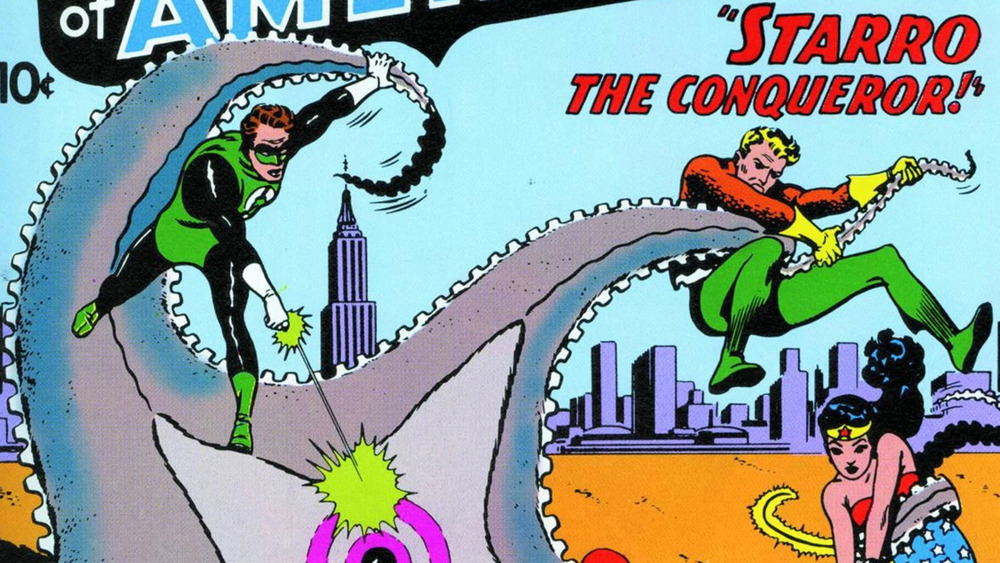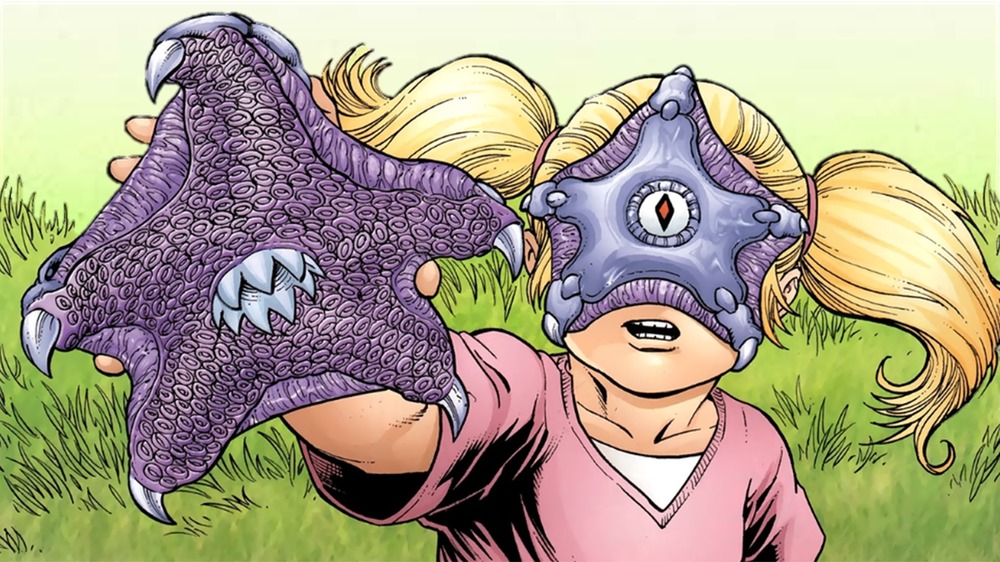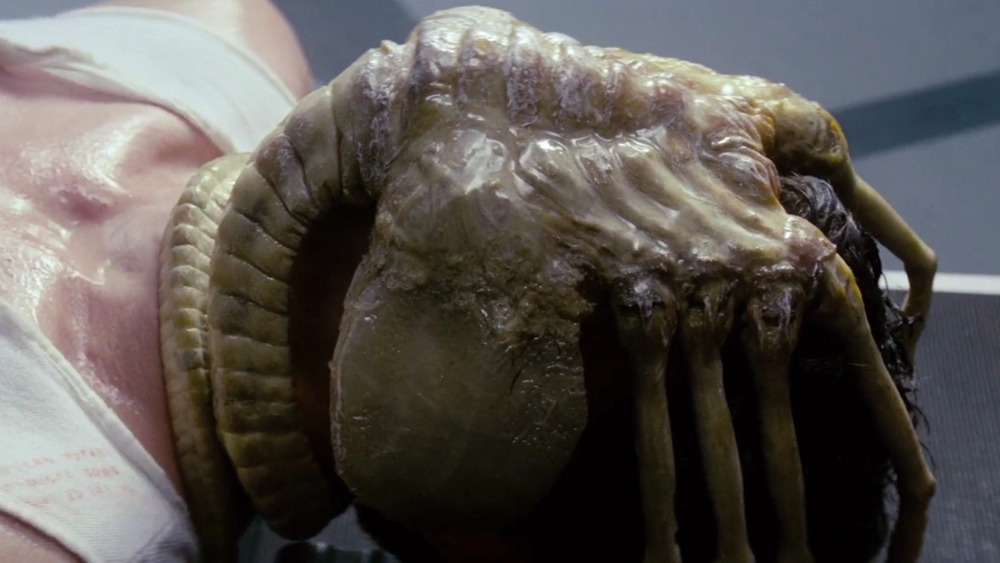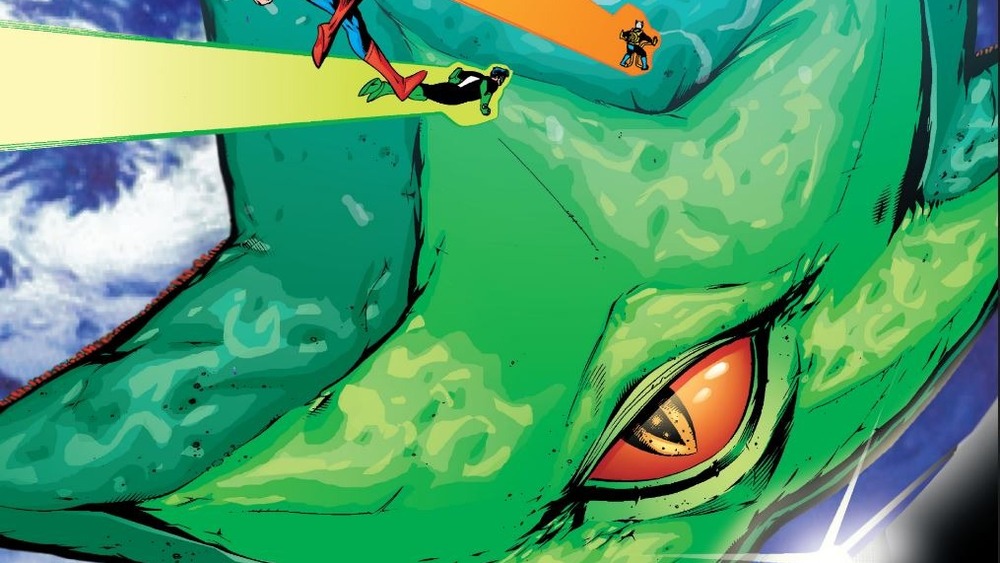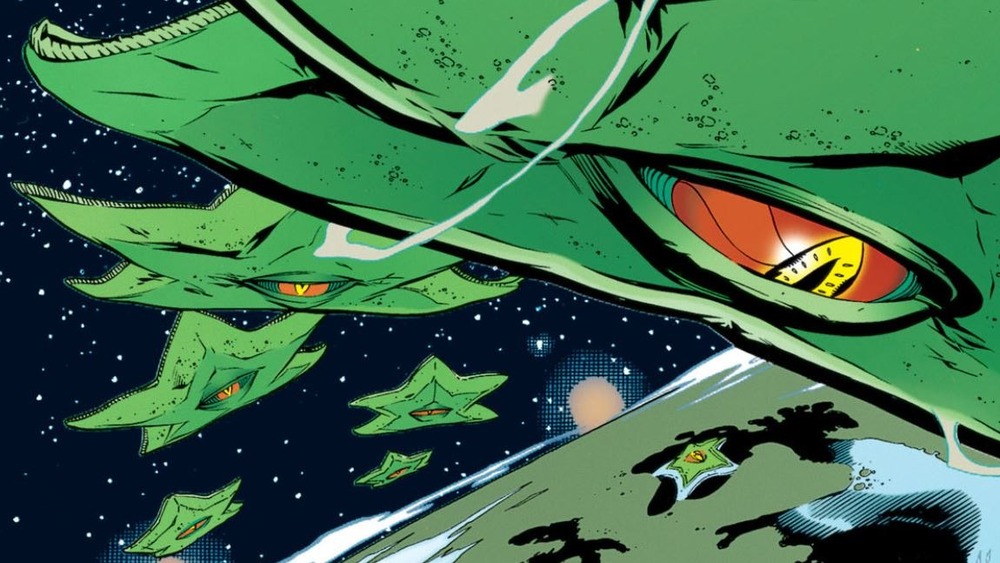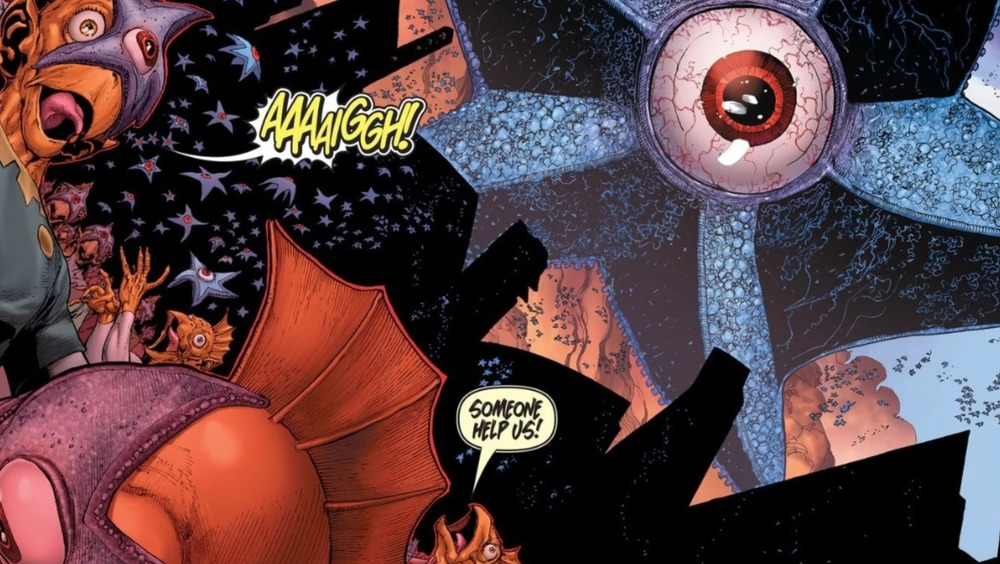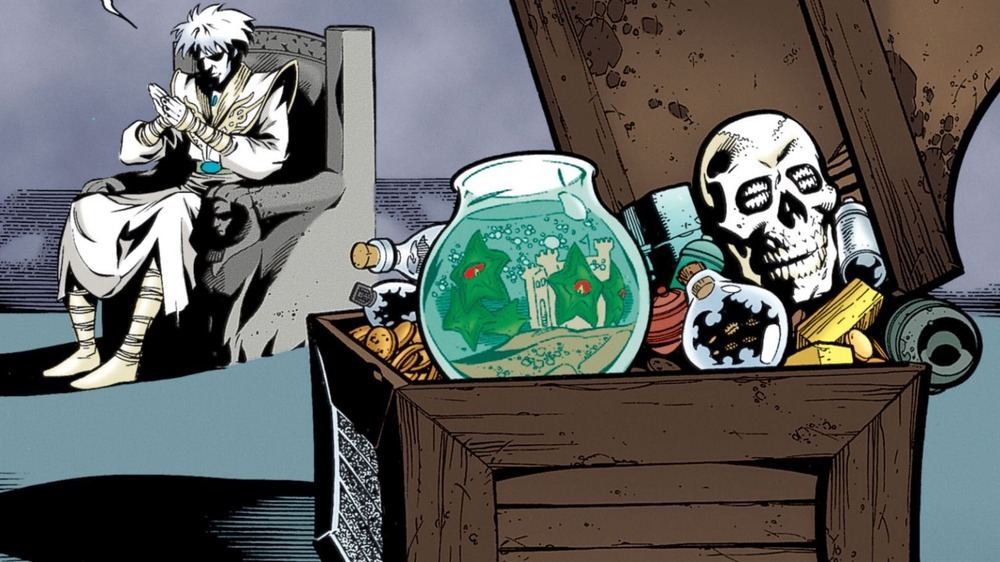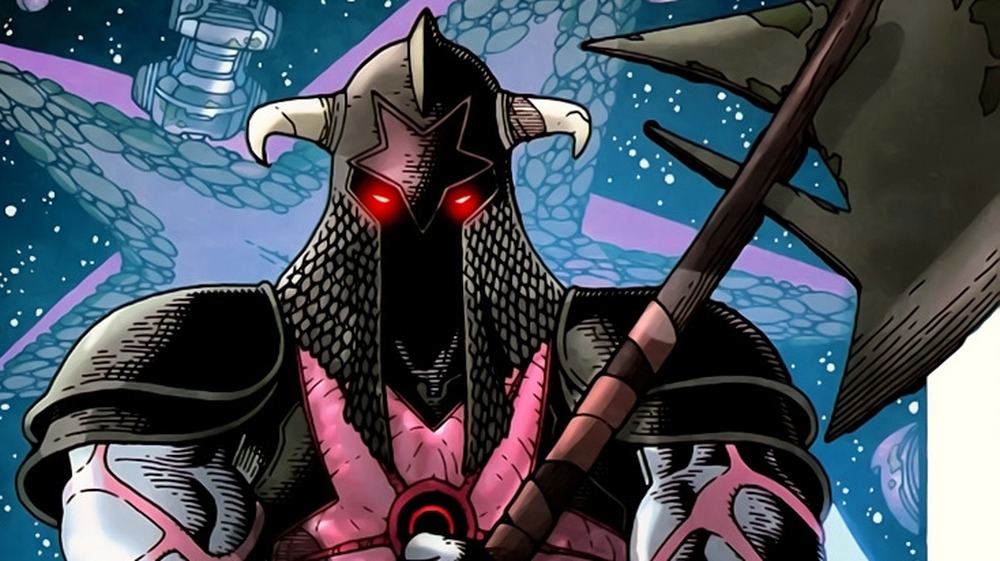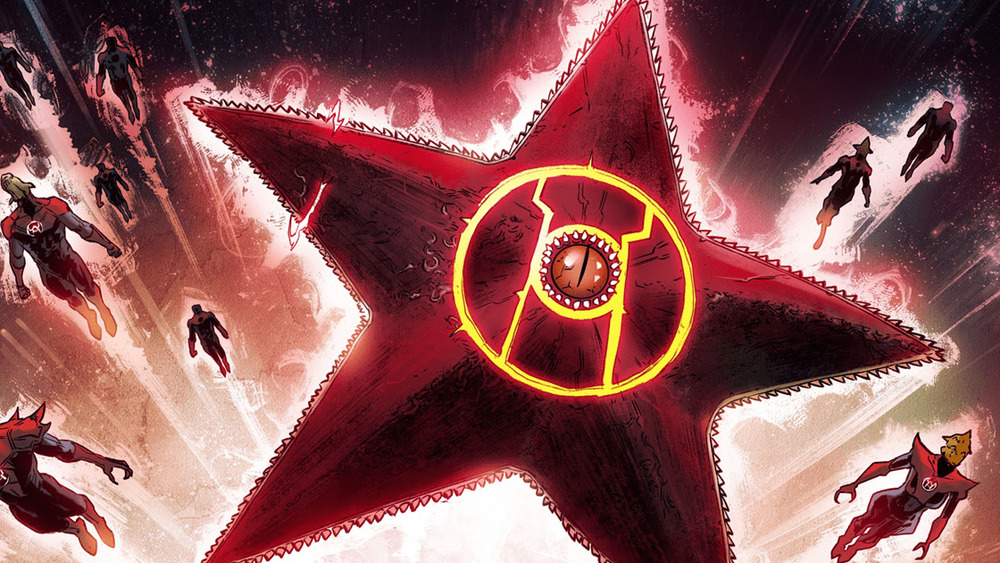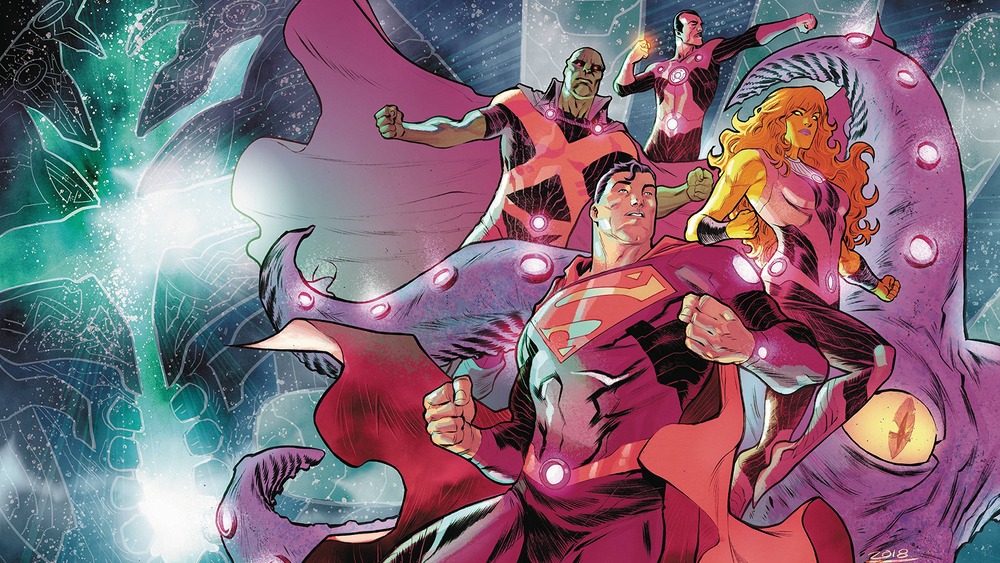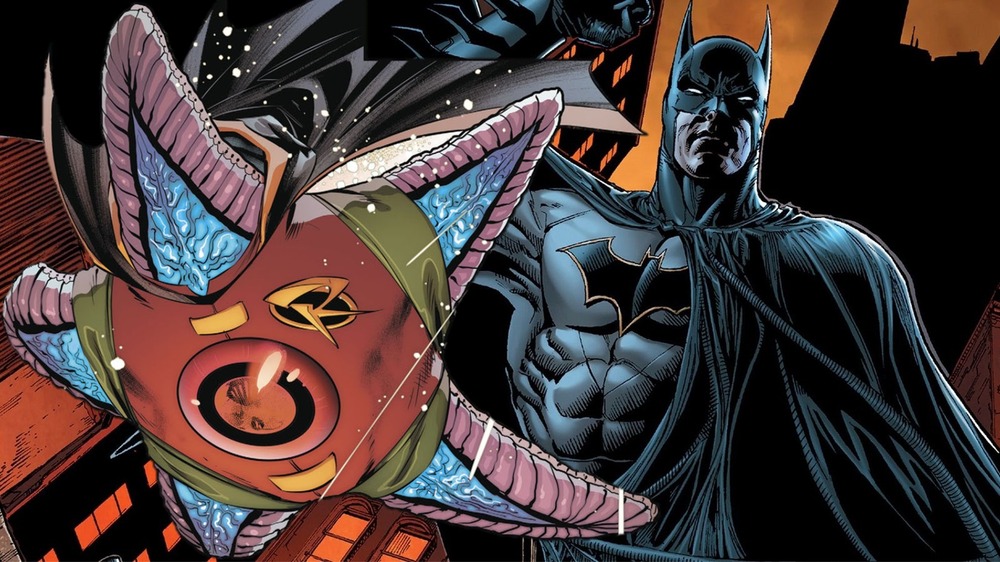The Untold Truth Of DC's Starro
One of DC's oldest and most bizarre villains, Starro the Conqueror is set to make his cinematic debut in James Gunn's The Suicide Squad (scheduled to hit theaters August 6th). A gigantic, intergalactic alien conqueror, Starro utilizes his incredible telepathic powers, atomic blasts, and armies of probes to mind control entire planets and conquer millions. Though not often adapted for animated series and the like (with the exception of a memorably creepy two-part episode of Batman: The Brave and the Bold in 2010 that had him taking down pretty much the entirety of the DC Universe), Starro is still one of the most dangerous forces in the DC Comics universe and has returned time and again to challenge the world's heroes, often using their own powers against them in the process.
A long-time villain of the Justice League, Starro is no idle threat and should not be taken lightly by his opponents, even if James Gunn does decide to depict him in a typically comedic light for his film. Here are some of the untold truths about Starro that will help viewers understand the esoteric baddie, and possibly give an idea of how he might be used in the highly-anticipated Squad sequel.
He was the Justice League's first villain
In 1960, DC Comics decided it was once again time to have their most popular characters unite as a team against evil. Penned by Gardner Fox with art by Mike Sekowsky, the Justice League of America was born in The Brave and the Bold #28, and the creative team had to find a suitably powerful villain for the team to fight in their first adventure. Enter Starro.
Swimming through the ocean's depths in the issue, Aquaman is approached by his friend Peter the Pufferfish (yes, really) who informs the King of Atlantis that he saw an extraterrestrial starfish touch down on Earth the night before. Aquaman summons the rest of the League, and they quickly engage the alien echinoderm and his servant-clones across the planet. The Starros used mind-control, atomic energy blasts, and incredible strength to carry out a plan to force humanity to launch their atomic missiles and plunge the world into a nuclear holocaust.
Starro feeds on atomic energy, and he wanted to use the radiation from the fallout to further his conquest across the universe. Luckily, the Justice League discovers that he shares the normal starfish intolerance to lime and uses this to defeat him.
He can be legitimately terrifying
Though the villain appears somewhat goofy at first, fans shouldn't let Starro's outlandish appearance deceive them. That's right, Starro — the giant alien starfish — can actually be one of DC Comics' most terrifying villains. Though absent in his first appearance, Starro almost always employs armies of small, face-hugging starfish drones during his conquests. These drones are parasitic organisms that latch onto the skulls of their victims and begins to drain their life-force. Once attached, their host is immediately placed under the complete control of Starro and will ruthlessly seek to add others to their ranks.
These drones allow Starro's forces to continuously expand in a manner not too dissimilar to zombies. For every superhero that Starro defeats, another soldier joins his ranks, making a fight against the creature a race against time as his enemies seek to defeat him before either too many of their forces join the enemy's army or before their own soldiers are sucked dry by the Conqueror's drones.
To add to that horror, people controlled by the drones are not asleep or unconscious; they are aware of every single atrocity that Starro forces them to commit, and when they are not actively in use, they are subjected to endless Lovecraftian nightmares as their life slowly ebbs away.
He predates Alien's facehuggers
Starro's face-seeking drones will likely remind many folks of one of the most beloved horror/science fiction movies of all time: Ridley Scott's 1979 film Alien. A genre landmark, its impact on so many horror and science fiction films that have come along in the decades since cannot be overstated. From the numerous sequels and prequels it has spawned in its own series to a steady stream of pop culture references elsewhere, Alien continues to occupy the creative gestalt of science fiction today.
One of the most famous and oft-copied aspects of that movie is the parasitic "facehugger." In the early stages of the Xenomorph's life cycle, the facehugger's role is to utilize a surprise attack to attach itself to a victim and deposit a seed inside that person's body which will eventually mature and burst out of the victim's chest when ready. Despite the visual similarities, however, Starro the Conqueror and his parasites predate the landmark films, leaving little doubt that Starro's minions are the OG facehuggers.
He can be MASSIVE
Starro, on an average day, is already what many would consider a "giant" starfish. He is large enough to carry small buildings and combat multiple superheroes at once, but he typically isn't depicted as large enough to be considered a "kaiju" like Godzilla. However, this is far from the limits of his abilities. If given enough energy to feed on and allowed enough time to grow, Starro can become absolutely massive. A normal Starro might be the size of a skyscraper, but a fully grown Starro can be the size of a planet.
At this incredible size, Starro is truly a force to be reckoned with. He can control entire continents of people at a time with the help of his drones, and can fire atomic blasts from his eye that take down New Gods like Darkseid in one hit (at least, for a time). The Justice League has only had to combat Starro at this size a handful of times, and each time they needed the help of god-like beings to mount any semblance of a counter attack.
There are millions of him
One planet-sized Starro would be scary enough, but unfortunately for the residents of the DC Universe, there are millions of them. Starro isn't a singular entity or an individual creature; instead, he is a series of interconnected beings that unite to form a whole, and that whole is Starro.
Psychically linked using telepathy, the Starros utilize a sort of size-based hierarchy. The smallest Starros (the face-hugging drones) are controlled by the building-sized Starro featured in the creature's first appearance. They, in turn, are controlled by the planet-sized Starros, and these connect throughout the universe to coordinate their conquests on a galactic scale, using the spoils of their previous victories to help them take over their next target.
This is why the Justice League has needed to defeat the creature so many times over the years. Every time one falls to their combined might, there are a million more waiting in the wings to take its place.
He has conquered galaxies
There are millions of Starros that have conquered billions of worlds across the universe, and even though forces like the Justice League and the intergalactic Green Lantern Corps have fought them at every turn, they simply cannot hope to ever truly eliminate the threat because Starro controls entire galaxies. Trillions of creatures across the universe are under his control, slowly feeding the parasite and forcing it to move on as it finishes draining them of life. This is the reason behind its constant need for conquest: Starro will always need more food.
This conception of Starro is far removed from his science fiction roots as an alien starfish, and could likely be far better described as a Lovecraftian horror. It lurks in the abyss of space, waiting to devour the mind, body, and soul of any being that its massive, unblinking eye might spot. It is out there, it is waiting, and it is coming.
He was once trapped in a god's fish tank
One of Starro's most famous stories ends in a manner rather befitting a character so often depicted as Lovecraftian horror. One seemingly normal night, Superman awakens to find that all of North America has fallen asleep and cannot wake up. Save for a few other members of the Justice League who happened to be awake at the time of the disaster, most of the world's heroes are under the spell of the force of something the story can only describe as "It."
Frantically trying to discover a way to wake everybody up, the Martian Manhunter flies into the atmosphere in an attempt to telepathically scan for the source of the slumber, and he eventually sees "It," a massive, continent-sized Starro hidden underneath Canada's Hudson Bay. Soon, a small army of continent-sized Starros descend from space. Thankfully, the Justice League wouldn't have to fight the creature alone.
Created by Neil Gaiman, Dream of the Endless is essentially the god of dreams and nightmares, and he sends some of the heroes into the nightmare-realm in which Starro often traps those under his control. Once there, the League launches an all-out assault and defeats the Starros in both the real world and his dream-realm, releasing the world from his control. After their defeat, Dream takes the Starros, carries them into his realm as a small necklace, and then keeps them in a fish bowl inside of his house.
He isn't always a starfish
As mentioned previously, the entity known as Starro controls itself through a sort of size-based hierarchy: the planetoid Starros control the regular Starros who control the drones. Presumably then, there is an entity even larger than all of them (perhaps the size of a sun) which controls the planetoid conquerors, but this has only been explored once, and the entity controlling it all was not yet another starfish but was instead...just some guy.
First introduced in R.E.B.E.L.S. #5 in 2009, the series revealed that the over-mind of every Starro in the universe, the one being who controlled everything from behind the scenes was some dude with an axe and a horned-helmet, and his name eventually turned out to be "Cobi." Yup, pronounced like the basketball star. Though a bit different than his depiction as a Lovecraftian horror (which had become the norm by that point), Cobi's reveal just goes to show that Starro's appearance isn't always so starfishy.
He's appeared in live-action before
Although The Suicide Squad may be Starro's cinematic debut, it is not his first appearance in live-action. That honor belongs to a brief cameo in the short-lived 2017 sitcom, Powerless. The show was a comedy series meant to depict how chaotic life would be for normal people within the DC Universe's world of superpowered beings. Airing on NBC, it featured a star-studded cast that included Vanessa Hudgens, Danny Pudi, Alan Tudyk, and Ron Funches. Unfortunately, the loss of a showrunner and a last-minute change of premise hit the show hard, and it never regained its footing enough to get beyond a dozen episodes.
Randomly enough, it did still manage to give DC Comics fans their first glimpse of a live-action Starro. Featured in a brief scene during the pilot episode entitled "Wayne or Lose," Starro can be seen atop a building through the window of the apartment belonging to Hudgens' Emily Locke. Before the villain can make a move however, a green energy blast (presumably from a Green Lantern) practically disintegrates the creature, causing its remains to shower down across the city and completely cover Locke's window.
He became a Red Lantern
Released in 2013, NetherRealm Studios' video game Injustice: Gods Among Us introduced its players to a world where Superman and many of his fellow heroes had become fascist tyrants, ruling the world with an iron fist to ensure its "security." Hoping to capitalize on the game's popularity and success, DC Comics quickly released multiple comic book series to tie-in to the games' stories, expanding on events beyond the game storyline.
One of those series, Injustice 2, was meant to lead up to the events of the second game's main story, and it featured an all-new Starro that had become the head of the Red Lantern Corps, a typically-depicted-as-evil version of the Green Lantern Corps that utilized rage to power its rings instead of willpower. Using his new-found abilities, Red Lantern Starro managed to place most of the Green Lantern Corps under his control until Hal Jordan (the second Green Lantern) finally managed to defeat him.
He once worked with the Justice League
Though typically one of the Justice League's most dangerous villains, Starro has been forced to work with them in the past to achieve a common goal. Once, in the aftermath of a multiverse-wide crisis, the Justice League realized that they had accidentally released another threat called the "Omega Titans." To defeat them, the League had to work with Brainiac and a number of other villains, including Starro. The unexpected allies split into four teams and took the fight to the Omega Titans across the galaxy.
Starro was placed into Superman's "Team of Mystery," alongside the Green Lantern villain Sinestro, the Martian Manhunter, and the Teen Titans' Starfire. The superhuman teams battled against the Omega Titans, eventually managing to defeat them once and for all, but not before Starro had apparently been killed at the hands of the god-like beings.
He once became Batman's sidekick, Robin
Starro's story didn't end there, however. Following the conflict with the Omega Titans, Batman collected a small sample of Starro's tissue and used it to clone a much smaller version of the starfish conqueror. The Dark Knight then kept the small Starro in a jar in his lab, with the creature picking up the nickname "Jarro" to distinguish him from his villainous forebear.
Batman later used the creature to help the Justice League in its ongoing battles against the Legion of Doom, and the small Starro went on to develop its own personality, thoughts, feelings, and dreams. He viewed the World's Greatest Detective as his father and, as such, loved him dearly. Knowing Batman's history and methodology, Jarro dreamed of not only becoming Batman's latest Robin, but his favorite Robin of all time. Eventually, Jarro got to achieve this dream in a way, joining his "father" alongside the Justice League in their fight against the Legion of Doom.
Yeah, it's a weird plotline, to be sure. But, based on what fans can expect from a vision the Suicide Squad trailer proudly touts as "the horribly beautiful mind of James Gunn," Starro's odd adventures have only just begun.
